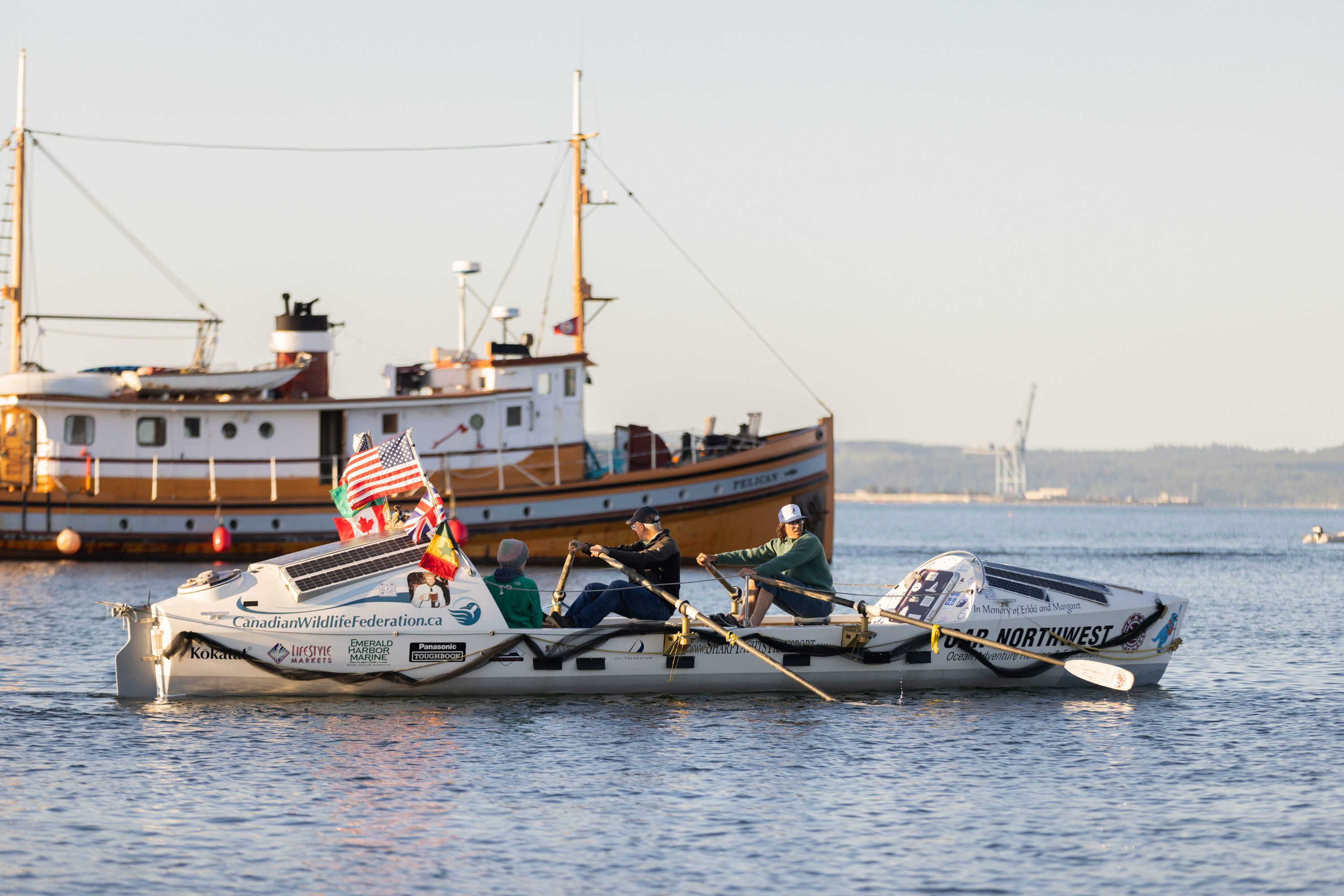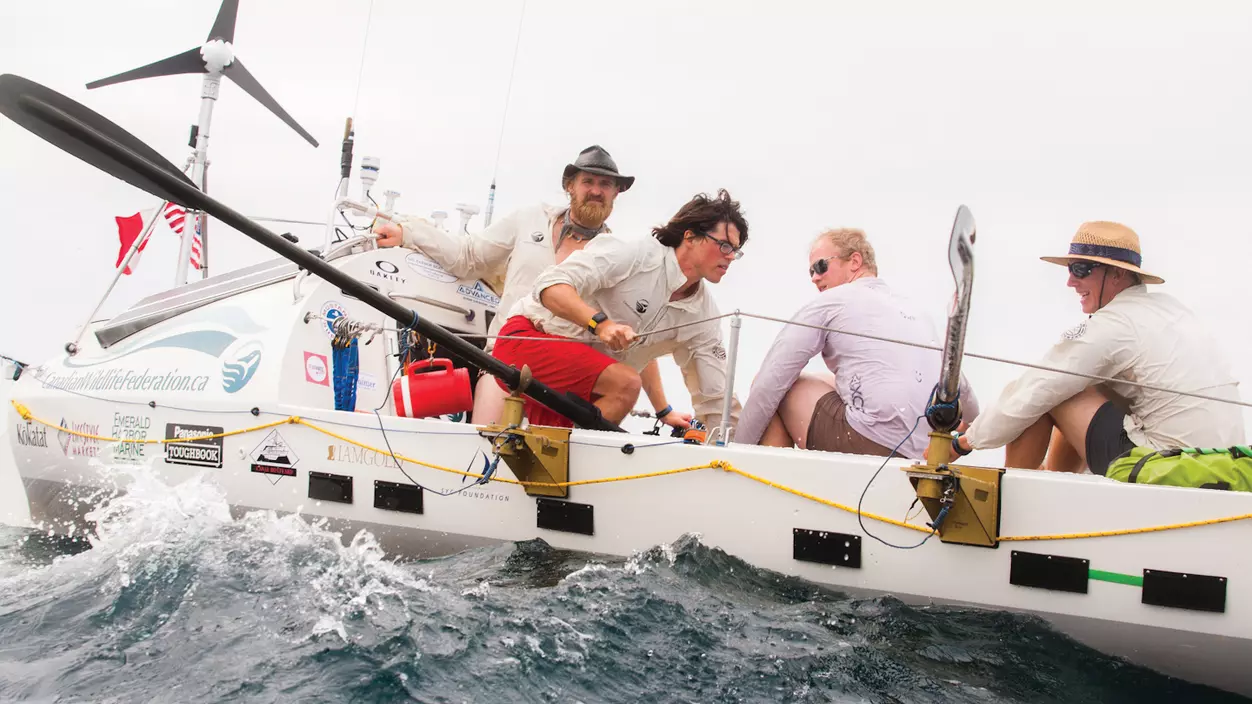With bagpipes, beer, and wrenches, a well-traveled craft meets its end.
The James Robert Hanssen, the world-record-setting 29-foot rowboat that crossed the Atlantic twice (almost), ended its storied life at a boatyard in Port Townsend, Wash., on June 5, 2023. The cause was structural fatigue and homelessness. She was 17.
Walking away after the memorial celebration, a woman among the hundred-or-so present was overheard saying: “When I came this morning I said to myself, I am not going to cry at a boat funeral. I am not going to cry at a boat funeral. But I did!” Other people wept, too.
The JR Hanssen was built and outfitted in 2005–06, after Jordan Hanssen ’04, one of the Loggers who helped Puget Sound clinch four consecutive Northwest Conference rowing championships, saw a poster in Seattle announcing a rowing race from New York to the U.K. Even in the rowing community, pulling oars across an ocean is on the outer limits of extreme, but Hanssen managed to recruit fellow Puget Sound rowing team members Brad Vickers ’05; Greg Spooner ’01, DPT’10; and Dylan LeValley ’05. Together they formed OAR (Ocean Adventure Racing) Northwest, and, as the exhausting list of requirements to prepare for the race grew, so did their supporters and advisers. There were experts on ocean science, navigation, and communications systems; a meteorologist; a team physician; media consultants; photographers; legions of family and friends. And the people at Emerald Harbor Marine in Seattle, the owner of which told the men, “I don’t want to help you, but if I don’t, you’re going to f---ing die.”




















